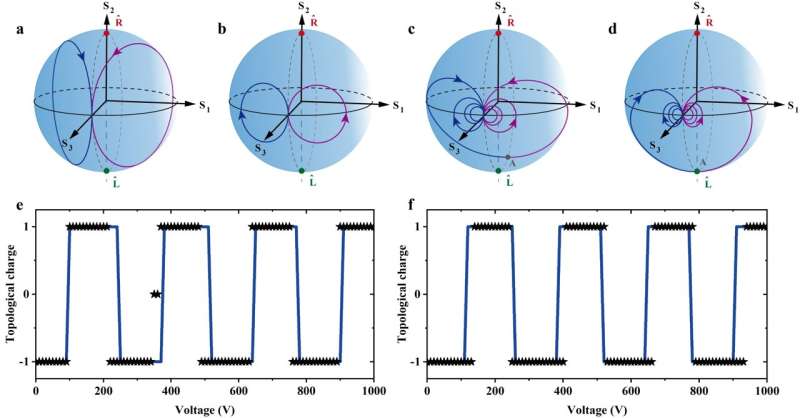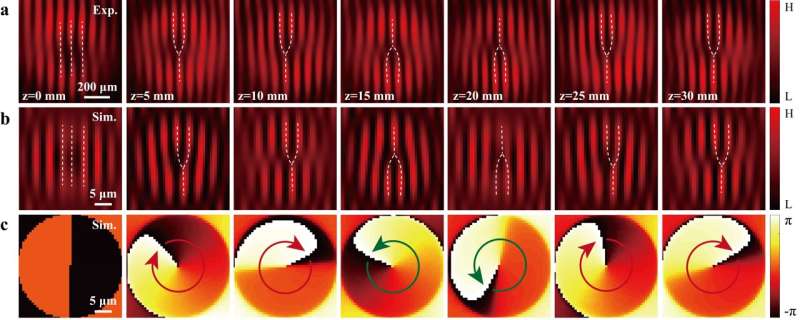The Rabi oscillation has been proven to be one of the cornerstones of quantum mechanics, triggering substantial investigations in different disciplines including atomic and molecular physics, acoustics, and optics. Various important applications have been demonstrated, ranging from nuclear magnetic resonance imaging and spectroscopy to quantum information processing.
So far only two independent classes of wave states in the Rabi oscillations have been revealed as spin waves and orbital waves, while a Rabi wave state simultaneously merging the spin and orbital angular momentum has remained elusive.
In a new paper published in Light: Science & Applications, a team of scientists, led by Professor Zhen Li and Shenhe Fu from Department of Optoelectronic Engineering, Jinan University, China, and co-workers have reported a new form of Rabi oscillation, exhibiting both spin and orbital angular momentum.
To reveal this fundamental phenomenon, they constituted a pseudo spin-1/2 formalism and optically synthesized a controllable magnetic field in the light-crystal interaction process. Based on this formulism, they observed simultaneous oscillations of the spin and orbital angular momentum in weak and strong coupling regimes, driven by the beam-dependent synthetic magnetic field.

Furthermore, they introduced an electrically tunable platform, allowing a fine control of transition between different Rabi oscillatory modes, resulting in an emission of orbital-angular-momentum beams with tunable topological structures. Their results constitute a general framework to explore spin-orbit couplings in the higher-order regime, offering routes to manipulating the spin and orbital angular momentum of light in three and four dimensions. The reported method and technique will find potential applications both in classical and quantum optics.
The observed spin-orbit-coupled Rabi oscillation is manifested by simultaneous oscillations of spin and orbital angular momentum with the coupling length, in the presence of the optically synthesized magnetic fields.

“We constitute a pseudospin-1/2 formalism in an analogy to Pauli equation describing the spinning of a quantum particle and optically synthesize a magnetic field through light-crystal interaction. In the system, we define the right- and left-handed circularly polarized vortex beams as the spin-up and spin-down equivalents coupled by the synthesized magnetic fields, which can be fully controlled by either structuring the light beam or engineering the crystal.”
“Structured light comprising a superposition of spin and orbital angular momentum states has drawn considerable interest since it holds a promise for multidimensional high-capacity data multiplexing. Our platform allows spatiotemporal modulations of the synthesized magnetic fields, enabling to manipulate the structured light beams in three- and four-dimensional configurations,” the scientists say.
“Since the setting is equivalent to those described by the Pauli equations such as in quantum mechanics and nonlinear optics, our results open new possibilities for spinor manipulation in the higher-order regime.”
More information:
Guohua Liu et al, Spin-orbit Rabi oscillations in optically synthesized magnetic fields, Light: Science & Applications (2023). DOI: 10.1038/s41377-023-01238-8
Citation:
Uncovering the secrets of spin-orbit optical Rabi oscillations (2023, October 12)
retrieved 13 October 2023
from
This document is subject to copyright. Apart from any fair dealing for the purpose of private study or research, no
part may be reproduced without the written permission. The content is provided for information purposes only.

